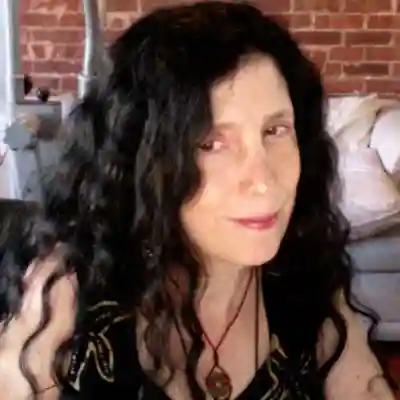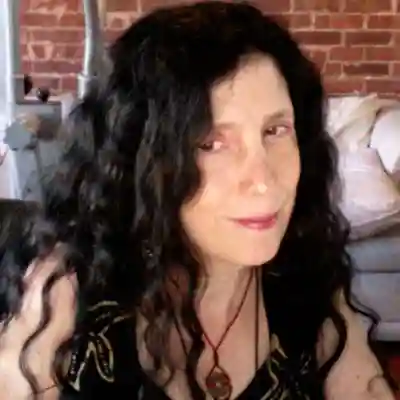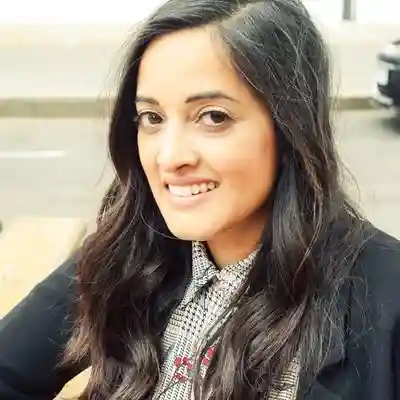In this presentation, Dr. Noah Charney explores cinematic writing techniques, which transform the way writers approach storytelling. Drawing from his expertise in both writing and art history, Dr. Charney emphasizes how modern readers process stories through a "movie-in-the-mind" effect. He provides actionable tips on how to craft scenes with visual elements, create tension through different angles, and incorporate vivid, memorable moments that keep readers engaged.
This post summarizes Dr. Noah Charney’s masterclass on cinematic writing techniques. To hear him go into more detail, follow the timestamps featured below.
Understanding cinematic writing (05:20)
Think about the last time you got lost in a book – rather than just scanning words on a page, you were probably watching the story unfold in your mind.
That “mind-movie” effect isn’t accidental. Our daily exposure to screens through television, films, and social media has shaped the way we process written content. Since the 1950s, this perspective has become more ingrained, and by the 1990s, screens were omnipresent. As a result, readers subconsciously translate stories into moving images.
Writers can take advantage of this natural tendency by creating stories that “play out” in the reader’s mind with vivid imagery and action. Just as filmmakers plan their shots, you should think about how to compose your scenes visually, so that you let readers experience the story rather than simply read it.
The importance of a strong narrative hook (09:25)
A strong opening hook is crucial for pulling readers into your story. The key is to show your character actively engaged in something meaningful in a specific time and place.
An action-based opening creates an immediate visual for the reader: whether it’s a man macheting his way through a jungle, or a character stepping onto a bustling city street. By choosing dynamic verbs (like “macheted” instead of just “walked”), you can craft an opening that feels like a movie scene.
While writing, it’s better to avoid overusing adjectives or crowding the opening with description. Instead, focus on a clean, engaging visual that sets the tone for the rest of the story. A well-executed hook should raise questions that propel the plot forward and make readers eager to continue.
Building tension with delayed resolution (16:30)
Creating tension is vital to holding readers' attention, and one of the most effective ways to do this is by delaying the resolution of the questions you raise in the narrative.
Take, for example, this opening:
A sweat-smothered man in a wide-brimmed hat, knee-high leather boots, and a khaki uniform machetes his way through lush jungle foliage. As thick tangles of vine fall beneath his blade, he pushes into a clearing — then suddenly staggers back. The fanged mouth of a primordial stone beast gapes before him. Beyond it rise the crumbled ruins of a colossal stone portal, black with age yet grand in its decay — the gateway to an ancient Mayan city, long abandoned and lost to time.
The tension here doesn’t come from frantic action, but from the way information is revealed. The scene begins with movement (a man forcing his way through dense jungle) and then, just as the reader’s curiosity builds, the perspective shifts to something startling and unexplained: the open jaws of a stone beast. That momentary pause before revealing what he’s actually found sustains the suspense and keeps the reader engaged.
You can use this same principle to make your scenes feel more cinematic: raise a question, hold back the answer, and let readers sit in that space of anticipation. By controlling what’s seen and when, you create a rhythm of tension and release that mirrors the pacing of a film.
Storyboarding your scenes (17:50)
Storyboarding, a common practice in filmmaking, is an excellent tool for writers to break down their scenes into “shots.” Framing your scenes as camera shots (like a wide shot, a close-up, an over-the-shoulder view) can help you, as the writer, control how readers perceive the action. But using different angles doesn’t just guide the reader’s gaze; it also sets the tempo and atmosphere of the scene.
This clever cinematic technique can even be found in literary classics published long before the film existed. Take the opening excerpt from Charles Dickens’ Bleak House:
"London. Michaelmas term lately over, and the Lord Chancellor sitting in Lincoln's Inn Hall. Implacable November weather. As much mud in the streets as if the waters had but newly retired from the face of the earth, and it would not be wonderful to meet a Megalosaurus, forty feet long or so, waddling like an elephantine lizard up Holborn Hill. Smoke lowering down from chimney-pots, making a soft black drizzle, with flakes of soot in it as big as full-grown snowflakes—gone into mourning, one might imagine, for the death of the sun…"
You’ll notice that this descriptive passage has the same effect as a wide establishing shot of London — the camera gliding above the fog and soot before zooming in on the grimy details: mud in the streets, smoke from the chimneys, or the endless gray drizzle.
Writers like Dickens understood the power of perspective and detail, and used that to control how readers experience a scene. Here’s a simple way to apply this while writing: imagine how a film might depict the scene you’re trying to craft, and then translate that in your words. Storyboarding like this will help you turn your prose into a sequence of visual beats, making each scene feel more cinematic and alive.
Rewriting scenes from different perspectives (35:00)
Rewriting a scene from multiple perspectives is another excellent way to make your storytelling more cinematic. Here’s a quick prompt to get your imagination whirring:
Imagine a man being chased by police across St. Peter’s Square in Rome.
What perspectives can you describe it from? Perhaps you could write about it from an aerial view. Maybe you could switch perspectives to a bystander, the fugitive, or even the police officer.
Each lens alters the tone, pacing, and emotional weight of the moment. Experimenting with perspective gives scenes more depth, and it can amplify tension by revealing different emotions and motivations from various characters. Try various angles to see which perspective best enhances the scene and creates the precise emotional effect you want to achieve.
Practical tips for writers (45:55)
To make your writing feel more at home on the silver screen, focus on practical exercises that build rhythm and momentum. You can try writing in the present tense to create a sense of motion, or experiment with switching narrative voices (such as first-person or second-person) to find what best suits the scene.
Cinematic writing isn’t about overloading the text with excessive detail. Rather, it’s about creating striking, memorable moments that draw readers in and stay with them. Focus on the core action, mood, and emotional beats of a scene first. Once the scene feels like it could play out on screen, you’re on the right track!
By weaving these techniques into your writing, you’ll be able to create vivid, cinematic scenes that draw readers in and hold their attention to the very last line.





